
Escapism, Reality Shifting, and Denial – Escaping the Pain
The Practice of Reality Shifting, Escapism, Avoidance, Denial, and Escapism in Some Scam Victims and Survivors
Escapism, Reality Shifting, and Denial in our Modern World, and Especially in Many Scam Victims/Survivors – Helping Scam Victims to Understand the Dangers of Escapism and Denial
Primary Category: Scam Victim Recovery Psychology
Author:
• Vianey Gonzalez B.Sc(Psych) – Licensed Psychologist, Specialty in Crime Victim Trauma Therapy, Neuropsychologist, Certified Deception Professional, Psychology Advisory Panel & Director of the Society of Citizens Against Relationship Scams Inc.
• Tim McGuinness, Ph.D., DFin, MCPO, MAnth – Anthropologist, Scientist, Polymath, Director of the Society of Citizens Against Relationship Scams Inc.
Author Biographies Below
About This Article
You can use imagination as a tool, not a trap. Choose brief, purposeful escapes, then return to the facts and take one concrete step. When you set limits, protect sleep, test your story with honest feedback, and pair relief with repair, you turn escapism into recovery and keep avoidance and denial from running your life.
Note: This article is intended for informational purposes and does not replace professional medical advice. If you are experiencing distress, please consult a qualified mental health professional.

Escapism and Denial in our Modern World, and Especially in Many Scam Victims/Survivors
Helping Scam Victims to Understand the Dangers of Escapism and Denial
Author’s Note
This may feel like we are blaming victims, but we are not. This is about trying to help the scam victims/survivors, their families, advocates, and professionals to better understand societal tendencies in all of us. This tendency to want to escape reality is actually a relatively modern phenomenon; it can both entertain us and also prevent us from dealing with very real problems in our lives and society.
Escapism: Introduction and Working Definition
You live in a world that demands attention, judgment, and follow-through. When pressure climbs, you look for ways to lower the load. Escapism is one of those ways. At its core, escapism is the intentional or automatic shift of your attention away from present realities into substitute experiences that feel safer, easier, or more rewarding. You enter those substitutes through media, daydreams, curated identities, shopping, food, substances, workaholism, gaming, or even idealized plans that you never intend to execute. Escapism is not a diagnosis and it is not always harmful. You can use it to rest, gain perspective, and spark creativity when you approach it deliberately. It becomes a problem when the escape starts to manage you rather than you managing it.
You can define escapism in practical terms as a cycle with three parts. First, you face a demand or discomfort that exceeds your current tolerance. Second, you redirect attention into a different world, task, or identity that offers relief or control. Third, you repeat the redirection because it works in the short term. Repetition trains a habit. Over time, the habit becomes your default response to stress, shame, conflict, or uncertainty. That is when escapism shifts from relief to avoidance. The mind learns the quick path to less pain and it takes it automatically.
You operate under real cognitive limits. When overload builds, your brain favors fast routes that promise a drop in tension or a burst of reward. Short clips, algorithmic feeds, and familiar fantasy loops are efficient at supplying that drop or burst. Your body also participates. When you feel stressed, your heart rate, breathing, and stress hormones rise. If a familiar escape lowers those signals, your nervous system learns to reach for it again. None of this means you are weak. It means your biology responds to reinforcement. You can work with this if you name it and plan for it.
How Escapism Turns Into Systematic Denial of the Truth
Avoidance becomes denial when you start to treat the substitute world as your operating reality. Several mechanisms drive this shift, and they work together if you do not interrupt them.
- Selective attention. You narrow your focus to cues that support the preferred version of events and you ignore disconfirming information. The mind treats discomfort as noise rather than as data. You scroll past warnings, minimize bills, or delay medical results because they do not fit the story you prefer.
- Motivated reasoning. You explain away contradictions to protect your narrative. You privilege sources, explanations, and friends who agree with you. You downgrade or attack anything that threatens the story you want to keep. You do this to protect hope or identity, not because you enjoy being wrong.
- Narrative substitution. You replace complex facts with a simpler storyline that preserves dignity or possibility. You repeat the storyline until it feels truer than the messy record of what actually happened. The repetition reduces anxiety while it also reduces accuracy.
- Reward reinforcement. Each escape reduces immediate discomfort, so your brain learns to choose it faster next time. Relief becomes the reward signal. The signal entrenches the habit even when the long-term costs grow. What helps for ten minutes can hurt across ten months.
- Social mirroring. Online groups, fandoms, or peer circles validate the substitute world. Likes and comments act as proof. Shared language and inside references create belonging that shields you from outside feedback. Community is healthy when it strengthens reality testing. It becomes risky when it punishes honest doubt.
- Feedback insulation. You restructure your days to avoid real-world tests. You skip the phone call, the bank statement, the medical appointment, or the difficult conversation. Without tests, the false story never faces consequences, so it hardens. The less you check, the more confident you feel, and the more danger you carry forward.
- Temporal displacement. You postpone decisions in favor of planning or fantasizing. You feel productive because you think about solutions, but time passes without action. Delay protects the illusion while the underlying problem grows. Plans comfort you. Steps change you.
You recognize the progression by its outcomes. Your world shrinks to what fits the preferred storyline. Your tolerance for discomfort falls. Your capacity for honest self-assessment erodes. Relationships become scripted. Financial, legal, or health realities are handled late or not at all. Each of these signals that escapism has crossed the line into denial. You can turn this around by restoring contact with facts, setting small tests you cannot skip, and asking for one trusted voice to review your story with you.
A practical stance keeps you in charge. Name the function of each escape before you begin it. Set time limits. Pair escapes with one concrete step in the real situation you face. Invite corrective feedback from at least one person who will tell you the truth. Measure progress by actions completed, not by hours consumed in substitute experiences. Escapism can serve recovery, learning, and rest when you use it with intention. It becomes systematic denial when you let it replace accountability and consequence.
Where Escapism Begins
Escapism begins with a simple human fact. You imagine alternatives. You picture different roles, places, and outcomes, and you compare them to the life you live now. That comparison can motivate growth, or it can tempt you to drift into worlds that feel easier than the one in front of you. You do not need to reject imagination to live well. You need to understand how it works on you.
Stories train your attention. Rituals and art have always offered temporary relief and learning. Markets and platforms now package those experiences and deliver them on demand. The result is a spectrum that runs from healthy rehearsal and creativity to avoidance and delay. You can use escapes to reduce stress, test values, and return stronger, or you can use them to postpone necessary action. Your task is to place each escape on that spectrum and adjust accordingly.
This piece gives you a practical map. It explains core drivers like self-comparison, emotion regulation, and narrative identity. It traces the path from early myths to novels, film, games, and online identity play. It offers guardrails so you can benefit from imaginative transport without losing traction in your real goals. You will see why the wish to live another life is normal and how to convert that wish into energy for building the life you actually want.
Living a Life Not Your Own
You want to understand why you sometimes prefer a life that is not your own and how that wish developed into modern escapism. You can start with four drivers that operate in every healthy mind.
- Imagination and counterfactual thinking. You plan by running what-if scenarios. The same capacity that helps with survival also fuels fantasies of different identities, places, and outcomes. When you use it well, you prototype choices and practice courage. When you use it poorly, you hide in the prototype and never launch.
- Self-discrepancy. You compare the actual self to the ideal and the ought self. The bigger the gap, the stronger the pull toward imagined alternatives that temporarily close it. You can use the tension as guidance for action or as fuel for avoidance. Your choice determines the outcome.
- Emotion regulation. Imagined worlds reduce stress, supply hope, and give a sense of control when reality feels constrained. Used wisely, they help you reset. Used constantly, they drain your ability to face friction in the real world.
- Narrative identity. You understand life as a story. Trying on other roles and settings is a way to test plots, values, and endings without real-world cost. The testing builds empathy and perspective when you return. It fragments commitment when you never return.
Early Roots of Escapism
Religion and Myth
-
- Myth and ritual. Ancient stories and festivals let you step outside ordinary roles. Masks, initiations, and seasonal dramas offered sanctioned identity shifts. You learned about courage, betrayal, belonging, loss, and renewal by acting them out.
- Philosophical beginnings. Plato warned that imitation in art can mislead the soul. Aristotle argued that tragedy purges emotion and teaches through safe imitation. This early debate still guides you. Escapism can corrupt or refine you depending on how you use it.
- Religious imagination. Visions of otherworldly cities, paradises, or spiritual rebirth gave models beyond present hardship. The idea of a higher or future life legitimized yearning for elsewhere and helped people endure suffering while orienting toward meaning.
From Art to Mass Culture
The rise of the novel made immersive private worlds routine. You experimented with inner lives, social mobility, and moral choices through characters. Theater, photography, and cinema then amplified transport through visual realism. Film standardized shared dreams and celebrity identification. Broadcast media extended the reach. Radio and television created continuous, accessible escapes and parasocial relationships with public figures that felt intimate even when they were one-sided.
Psychology Meets Modernity
Industrial and urban life standardized work and compressed time. Crowded cities and repetitive tasks increased the appeal of alternate identities and mental vacations. Consumer capitalism linked products to aspirational selves. Escapism became a market, not only a pastime. Psychoanalytic ideas framed fantasy as wish fulfillment and coping. Existential thinkers warned against bad faith, where you flee responsibility by hiding in roles. Both perspectives still shape how you judge your own escapes.
Digital Transformation
Interactive media and games turned you from a viewer into an actor. Avatars let you not only watch but live within other lives. Choice and skill replaced passive viewing. Online identity play allowed curated selves. You tested values, status, and belonging through usernames, filters, and communities. Fandom and world-building invited co-creation. The border between audience and author thinned, which strengthened identification and investment. Immersive tech increased presence and personalization. The line between exploration and avoidance blurred. Micro-trends like reality shifting packaged structured imagination as a method for relief and agency. These practices sit on a continuum from daydreaming and lucid dreaming to full identity experimentation.
Benefits of Escapism
- Practice and learning. You rehearse decisions, strengthen empathy, and grow creativity in safe environments. You experiment cheaply and carry skills back.
- Recovery and resilience. Temporary relief can restore energy for real problems. Brief mental distance helps you return with clearer thinking and more patience.
- Social connection. Shared stories and identities build community and meaning. You feel seen and supported when others love the same worlds you love.
- Risks
- Avoidance. When escape replaces engagement, real problems grow. Bills compound, conflicts escalate, and health concerns worsen.
- Identity diffusion. Constant switching weakens commitments and follow-through. You spread attention across many selves and never anchor in one.
- Commercial capture. Platforms optimize for attachment and time, not wellbeing. Without limits, you spend hours and money in ways that do not serve your goals.
The Present Logic of Escapism
Today’s escapism operates under three forces.
- Frictionless access means content is always available and tailored to mood.
- Participatory identity means you do not just consume a world, you help make it, which deepens investment.
- Algorithmic reinforcement means systems learn what soothes or excites you and keep serving more of it.
If you do not set the purpose, the system will set it for you.
A Practical Stance
Treat alternate lives as tools, not substitutes. Ask what a given escape helps you feel, learn, or plan. Pair every hour of escape with one concrete action in your real goals, so transfer occurs. Prefer creative or social forms of escapism that build skills, relationships, or insight. Set clear boundaries for time and spending to avoid drift. Protect sleep and daylight because fatigue lowers distress tolerance and increases avoidance. Track mood and outcomes. If an activity reliably worsens anxiety, debt, or relationships, redesign or retire it. Practice single-task work, quiet time, and honest conversations without a parallel screen to rebuild your tolerance for reality.
How Common Escapism is and Why Reality Feels Harder Now
Escapism is routine behavior. You encounter it in entertainment queues, social feeds, shopping, travel, and even your professional identity. Micro-escapes such as daydreams, music, and late-night scrolling appear many times a day. The frequency makes escapism a stable feature of modern culture. Accept this as normal and then decide how you will shape it.
Accepting reality feels harder now because several conditions intensify avoidance. Constant comparison raises perceived standards for appearance, success, and ease. Frictionless access removes effort barriers, so escape is one tap away. Personalization loops deliver more of what soothes you, which strengthens the habit. Fragmented attention erodes patience for slow tasks, so reality feels dull by contrast. Declining shared narratives reduce trust in common facts, so personal worlds feel safer than a contested public reality. Economic and social strain raises baseline stress, which pushes you toward short-term relief. Identity pressure makes daily life feel like an audition rather than a home, so curated selves look more attractive than unfinished real ones.
Escapism is common because it builds on normal imagination, reward learning, and story. Today’s culture magnifies it through comparison, instant access, and personalization. Your goal is not to ban escape but to channel it so that it supports a life you are willing to inhabit.
What is Reality Shifting?
Reality shifting refers to an online practice where you try to move your felt consciousness from your current reality into a desired reality through structured imagination. You prepare by relaxing, visualizing, and using scripts that define where you want to go and who you want to be. You may count, repeat phrases, or picture a “waiting room” before entering the desired world. Many people choose fictional universes or idealized versions of their present life. The experience resembles meditation, self-hypnosis, lucid dreaming, or deep imaginative absorption rather than literal travel. When you approach it with care, you can use it as a creative exercise or a form of guided imagery.
Reality shifting surged because it offered agency, belonging, and relief during a time of uncertainty. Large fandoms supplied detailed worlds and shared language. Social platforms rewarded tutorials, success stories, and aesthetics that made the practice feel accessible. Personalization tools helped you tailor scripts to your needs. The method traveled fast because it promised hope and control within a clear routine you could learn.
You may gain creativity, improved relaxation skills, and a sense of mastery over your attention. You may also form supportive friendships around shared stories. Risks arise when attempts run late into the night and disrupt sleep, when you use the practice to avoid important tasks or relationships, or when you struggle with anxiety, dissociation, or derealization and push yourself beyond safe limits. The signs of trouble are simple. Your sleep degrades. Your relationships strain. Your responsibilities slip. Your mood worsens when you do not practice. If you notice these, step back and reset.
You can protect yourself by setting boundaries before you begin. Limit session time and end at a consistent hour so you protect sleep. Keep a simple log of mood, energy, and function across the next day. Pair the practice with one concrete action in your real life so you reinforce your return. Talk with at least one trusted person about your use and ask them to tell you if they see a decline in sleep, work, school, or relationships. If you live with anxiety or dissociation, consult a qualified clinician before intensive practice. Treat the technique as structured imagination, not as an escape clause from accountability.
You do not need to fear your imagination. You need to lead it. Decide what each escape is for, how long it lasts, and what you will do when you return. Use imagination to rest, to rehearse, and to create. Use reality to test, to decide, and to heal. When you hold both with intention, you build a life you do not need to run from.
The Difference Between Escapism, Avoidance, and Denial in Trauma Recovery
You need clear language to tell these apart because they feel similar in the moment but lead to very different outcomes. All three shift attention away from pain. Only one can reliably support healing when you use it on purpose and return to the facts.
Working Definitions You Can Use
-
- Escapism. You step away from a stressful reality on purpose and for a limited time. You choose activities that give you relief, perspective, or creativity. You plan the return. You remain aware of the facts and your responsibilities, even while you rest from them. Escapism becomes supportive when you set an intention, limit the time, and take one concrete action afterward that moves your real situation forward.
- Avoidance. You step away from stress to reduce discomfort right now, without a plan to return. You delay tasks, conversations, or decisions that would resolve the problem. You still know the facts, but you push them to the edges of your mind and fill the space with substitutes. Avoidance becomes a pattern when the short-term relief keeps winning over the long-term repair.
- Denial. You dispute or minimize the facts to protect your current story. You select information that fits the story and reject what contradicts it. You may build a daily routine that keeps reality tests away. Denial feels safer than avoidance because it claims that nothing crucial needs doing. It also carries the highest risk because consequences grow while you argue that they do not exist.
Why Trauma Makes These Boundaries Harder to See
After psychological trauma, your nervous system works harder to protect you. The amygdala stays on alert, the stress response activates faster, and your tolerance for strong feelings narrows. You may swing between hyperarousal and shutdown. When you feel trapped or overwhelmed, your mind reaches for the fastest way to turn down the intensity.
You also carry trauma-related learned behaviors. If freezing, appeasing, or dissociating kept you safe in the past, your brain tags those responses as effective. Modern triggers can call up old solutions even when your current situation needs a different approach. That is why avoidance and denial can feel automatic. Your body is not failing you. It is repeating what worked. You can retrain it with practice, structure, and support.
How to Tell Them Apart in Daily Life
-
- Intention. With escapism, you say, “I am going to decompress for thirty minutes, then I will make the call.” With avoidance, you say, “I will deal with this later,” and you do not set a time. With denial, you say, “There is nothing to deal with,” and you stop considering action altogether.
- Contact with facts. With escapism, you keep the facts in view. With avoidance, you keep the facts nearby but turned face down. With denial, you put the facts out of the room.
- Time patterns. Escapism has a planned start and stop. Avoidance stretches until a deadline forces action. Denial continues even after deadlines pass and consequences show up.
- Effect on function. Escapism restores energy and capacity. Avoidance drains capacity because problems accumulate. Denial erodes trust, safety, and credibility, which increases isolation and risk.
- Emotional signals afterward. After escapism, you feel calmer and more ready to act. After avoidance, you feel a brief lift followed by more dread. After denial, you feel irritated when others bring up evidence, or you feel numb and detached.
Common Examples in Trauma Recovery
-
- Escapism. You watch a favorite show for one episode after a hard therapy session, then you write your three action steps for tomorrow. You take a walk with music and call a friend to schedule the financial appointment you have delayed. You play a game for a fixed period and end by sending the email you drafted.
- Avoidance. You scroll for two hours instead of opening the medical portal. You reorganize your desk instead of filling out the police report. You plan a perfect routine for next week instead of completing today’s short task.
- Denial. You insist that the transfer will clear even when the bank has flagged fraud. You tell yourself that a partner’s repeated lies are misunderstandings. You reject the trauma diagnosis because it conflicts with your self-image, and you refuse all help that uses that language.
How to Move from Avoidance or Denial into Healthy Escapism and Engagement
-
- Name the purpose. Say out loud what the break is for, how long it will last, and what single action you will take when you return. This keeps you in charge.
- Use small tests. Pick short, observable tasks that bring reality back into view. Open the bill. Book the consult. Read the report. Face one fact at a time so you do not overload your system.
- Anchor with time and place. Set a timer before the break. Decide where you will sit when the timer ends and what you will do first. Physical anchors reduce drift.
- Pair relief with repair. Link a soothing activity to a corrective step. Tea, then the phone call. Walk, then the email. Music, then the document. Your body learns that comfort and courage can live in the same hour.
- Invite one honest mirror. Ask a trusted person to tell you when your break has turned into avoidance or when your explanation has slipped into denial. Agree on simple phrases such as “check the facts” or “time to return.”
- Strengthen tolerance for reality. Practice brief exposure to the task or topic you fear, then step back and regulate, then return. Increase the interval over time. This widens your window of tolerance and weakens the reflex to avoid.
What to watch if you have a trauma history
-
- Sleep. If your breaks push you past a healthy bedtime, you will have less emotional regulation the next day and more pressure to avoid.
- Secrecy. If you hide the amount of time, money, or attention you spend in your escapes, you have likely moved into avoidance or denial.
- Rigidity. If you get angry when someone presents disconfirming information, check for denial. Anger may be masking fear that the story cannot hold.
- Function. If your work, finances, health, or relationships decline while you feel more certain that everything is fine, pause and test your assumptions against hard data.
Escapism is a tool when you choose it, contain it, and return stronger. Avoidance is a stall when you know what is real and keep turning away. Denial is a barrier when you rewrite what is real to preserve comfort. Trauma makes quick exits more tempting and more automatic. You regain leadership of your life when you pair short, restorative escapes with steady contact with facts, small honest tests, and compassionate accountability.
Conclusion
You do not need to fear your imagination. You need to lead it. Escapism becomes healthy when you choose it, contain it, and return to the facts with renewed energy. Avoidance becomes costly when you delay the hard thing because comfort feels easier for the next ten minutes. Denial becomes dangerous when you rewrite what is true so you can keep the feeling you prefer. If you have lived through a scam or other psychological trauma, your nervous system reaches for quick exits because those exits once kept you safe. That history explains your reflexes. It does not have to decide your future.
You can steer with simple practices. Name the purpose of the break before you take it. Protect sleep, because tired brains avoid more and face less. Pair relief with one action that repairs something real. Keep one honest person in your corner who will help you test your story against facts. Use short, repeated exposures to feared tasks so your window of tolerance grows again. Track outcomes, not intentions. If an activity leaves you calmer, clearer, and more able to act, it belongs. If it leaves you secretive, depleted, or more behind, it needs limits or it needs to go.
You deserve a life you do not have to run from. Healthy escapes can help you rehearse, learn, and rest. Reality work builds safety, credibility, and pride. When you combine both with intention, you rebuild trust in yourself, repair the damage that others caused, and recover the capacity to choose. That is how you close the gap between the life you imagine and the life you live.

Glossary
- Accountability — The practice of owning actions, decisions, and outcomes without shifting blame. It anchors recovery because consistent truth-telling and follow-through rebuild trust with self and others. Practical accountability uses small commitments tracked against clear facts.
- Accountability partner — A trusted person who agrees to provide honest feedback and gentle pressure to follow through. This role helps interrupt avoidance or denial by introducing outside reality checks. Good partners focus on facts, timelines, and next steps.
- Action-step pairing — The habit of linking a soothing activity to a concrete task. This pairing trains the brain to associate relief with progress rather than delay. It turns short breaks into launchpads for action.
- Algorithmic reinforcement — The process by which platforms learn a user’s preferences and serve more of the same. This loop increases time-on-platform and can deepen avoidance if left unmanaged. Clear goals and time limits reduce this pull.
- Anchoring (time and place) — A pre-decided cue that signals when a break ends and work begins. Simple anchors include a timer, a specific chair, or a written first step. Anchors reduce drift and help transitions feel doable.
- Avoidance — A short-term strategy to reduce discomfort by delaying tasks, decisions, or conversations. Facts remain known but are pushed to the edges of awareness. Over time avoidance adds debt, stress, and risk.
- Boundaries — Agreed limits on time, spending, and attention that protect sleep, relationships, and goals. Boundaries reduce impulsive escapes and create room for steady repair. Strong boundaries are specific, visible, and rehearsed.
- Commercial capture — The point where a platform or product shapes behavior for its own metrics rather than the user’s wellbeing. It shows up as compulsive use, hidden costs, or constant upsells. Clear budgets and scheduled use lower exposure.
- Consumer capitalism — A system that links products with aspirational identities and moods. It normalizes shopping as self-regulation and fuels escapist loops. Awareness and budgeting keep this influence in proportion.
- Creative escapism — Short, intentional breaks that involve making rather than only consuming. Writing, sketching, or building in small doses restores energy and produces transferable skills. This form of escape tends to improve mood and agency.
- Curated identity — A selective presentation of self through filters, posts, and polished narratives. It can support experimentation but may widen the gap between inner reality and public image. The larger the gap, the higher the strain.
- Denial — A defense that disputes or minimizes facts to preserve a preferred story. Denial blocks problem-solving because evidence is kept out rather than faced. It often grows in secrecy and shrinks under shared, verifiable data.
- Digital transformation — The shift from passive media to interactive, personalized environments. Avatars, forums, and immersive tools allow identity play at scale. This change expands both healthy rehearsal and unhealthy avoidance.
- Dissociation — A state of detachment from thoughts, feelings, or surroundings that can follow trauma. It reduces distress in the moment but weakens reality testing if frequent. Grounding skills and professional support help restore presence.
- Emotion regulation — The set of skills used to lower arousal and stabilize mood. Effective strategies are brief, repeatable, and do not create new problems. Poor strategies feel good now but increase costs later.
- Escapism — A temporary shift of attention into substitute experiences for relief, perspective, or creativity. When deliberate and time-limited, it supports recovery. When habitual and aimless, it slides toward avoidance.
- Exposure (graded) — A planned, stepwise return to feared tasks or topics. Small, repeated doses widen tolerance and shrink avoidance. Tracking wins keeps momentum visible.
- Feedback insulation — The deliberate arrangement of life to avoid tests that could disconfirm a preferred story. Skipped calls, unopened bills, and canceled appointments are common signs. Removing insulation restores corrective feedback.
- Fictional universes — Imagined worlds that offer coherent settings, rules, and roles. They enable safe rehearsal of values and decisions. Overuse can crowd out real-life experiments.
- Frictionless access — Instant, low-effort entry to media, shopping, or games. Convenience increases frequency and duration of use. Pre-deciding limits counteracts this effect.
- Guided imagery — A structured attention practice that uses detailed visualization to achieve calm or focus. It can support healing when paired with real-world action. It becomes problematic if used to replace contact with facts.
- Honest mirror — A person or practice that reflects reality without distortion. This can be a friend, a sponsor, or a written checklist against data. Honest mirrors reduce narrative drift.
- Hyperarousal and shutdown — Common trauma responses marked by either overactivation or numbing. Both states increase the appeal of quick exits. Regulating the body first makes factual problem-solving possible.
- Identity diffusion — A pattern of frequent shifts in roles and values without consolidation. It creates low follow-through and fragile commitments. Gentle constraints and small completions build identity strength.
- Imagination — The capacity to simulate scenarios, roles, and outcomes. It fuels creativity and planning when tied to action. Without a return path it can sustain delay.
- Lucid-dream adjacency — Experiences that feel dreamlike or scripted while a person remains aware. These states can be restful and creative. They are not substitutes for real-world decisions.
- Micro-escapes — Brief, everyday exits such as scrolling, playlists, or snacks. They are useful when intentional and time-bound. Unplanned stacking of micro-escapes becomes macro-avoidance.
- Motivated reasoning — The tendency to favor information that protects identity or hope. It feels like logic but follows preference more than evidence. Pausing to seek disconfirming data weakens this bias.
- Narrative identity — The internal story that organizes memories, values, and goals. Strong narratives evolve with facts and accountability. Rigid narratives resist evidence and foster denial.
- Narrative substitution — The replacement of complex facts with a simpler, protective story. Repetition lowers anxiety while it lowers accuracy. Timed reality checks keep the story honest.
- Parasocial relationship — A one-sided bond with media figures that feels mutual. It can offer comfort and modeling. Overreliance displaces real support.
- Participatory identity — The sense of self built by co-creating worlds, content, or communities. Participation increases investment and skill. It also increases time costs if goals are unclear.
- Reality shifting — A community practice that uses scripts, visualization, and routines to enter a desired reality. It functions as structured imagination or guided imagery. Sleep protection and limits are essential safeguards.
- Reality testing — The habit of comparing a story against observable, external facts. It includes checking statements, documents, and timelines. Regular testing reduces both avoidance and denial.
- Reinforcement learning — The brain’s tendency to repeat behaviors that lower distress or raise reward. Short-term relief trains fast, even when long-term costs rise. Designing better rewards steers habits.
- Reward reinforcement — The immediate drop in discomfort that makes an escape attractive. Each successful drop increases the chance of repeating the behavior. Pairing relief with action redirects this learning.
- Selective attention — The filtering of inputs to fit mood or goals. Under stress the filter favors safety signals and avoids threat cues. Intentional scheduling of fact-checks widens the filter.
- Self-discrepancy — The gap between actual, ideal, and ought selves. Larger gaps increase pressure to escape or perform. Actionable goals shrink the gap more than fantasies do.
- Sleep health — The foundation that supports emotional regulation, memory, and judgment. Poor sleep increases avoidance, irritability, and impulsivity. Consistent routines protect recovery.
- Social mirroring — The way groups confirm or challenge a person’s story. Healthy mirroring rewards honesty and course correction. Unhealthy mirroring punishes doubt and breeds denial.
- Structured imagination — Planned use of visualization to learn, create, or rehearse. It includes a start, a stop, and a return action. Structure converts fantasy into skill.
- Temporal displacement — The habit of planning or fantasizing instead of acting. Time passes while tasks remain. Small, timed starts break this loop.
- Trauma — A wound to mind or body that overwhelms coping and reshapes threat detection. It makes quick exits feel necessary and automatic. Slow, supported exposure restores choice.
- Window of tolerance — The range in which a person can feel feelings and think clearly at the same time. Too much arousal or too little pushes behavior toward escape. Practices that calm the body and face one fact at a time widen this window.
Author Biographies
-/ 30 /-
What do you think about this?
Please share your thoughts in a comment below!
Important Information for New Scam Victims
- Please visit www.ScamVictimsSupport.org – a SCARS Website for New Scam Victims & Sextortion Victims.
- SCARS Institute now offers its free, safe, and private Scam Survivor’s Support Community at www.SCARScommunity.org – this is not on a social media platform, it is our own safe & secure platform created by the SCARS Institute especially for scam victims & survivors.
- SCARS Institute now offers a free recovery learning program at www.SCARSeducation.org.
- Please visit www.ScamPsychology.org – to more fully understand the psychological concepts involved in scams and scam victim recovery.
If you are looking for local trauma counselors, please visit counseling.AgainstScams.org
If you need to speak with someone now, you can dial 988 or find phone numbers for crisis hotlines all around the world here: www.opencounseling.com/suicide-hotlines
Statement About Victim Blaming
Some of our articles discuss various aspects of victims. This is both about better understanding victims (the science of victimology) and their behaviors and psychology. This helps us to educate victims/survivors about why these crimes happened and not to blame themselves, better develop recovery programs, and help victims avoid scams in the future. At times, this may sound like blaming the victim, but it does not blame scam victims; we are simply explaining the hows and whys of the experience victims have.
These articles, about the Psychology of Scams or Victim Psychology – meaning that all humans have psychological or cognitive characteristics in common that can either be exploited or work against us – help us all to understand the unique challenges victims face before, during, and after scams, fraud, or cybercrimes. These sometimes talk about some of the vulnerabilities the scammers exploit. Victims rarely have control of them or are even aware of them, until something like a scam happens, and then they can learn how their mind works and how to overcome these mechanisms.
Articles like these help victims and others understand these processes and how to help prevent them from being exploited again or to help them recover more easily by understanding their post-scam behaviors. Learn more about the Psychology of Scams at www.ScamPsychology.org
SCARS INSTITUTE RESOURCES:
If You Have Been Victimized By A Scam Or Cybercrime
♦ If you are a victim of scams, go to www.ScamVictimsSupport.org for real knowledge and help
♦ SCARS Institute now offers its free, safe, and private Scam Survivor’s Support Community at www.SCARScommunity.org/register – this is not on a social media platform, it is our own safe & secure platform created by the SCARS Institute especially for scam victims & survivors.
♦ Enroll in SCARS Scam Survivor’s School now at www.SCARSeducation.org
♦ To report criminals, visit https://reporting.AgainstScams.org – we will NEVER give your data to money recovery companies like some do!
♦ Follow us and find our podcasts, webinars, and helpful videos on YouTube: https://www.youtube.com/@RomancescamsNowcom
♦ Learn about the Psychology of Scams at www.ScamPsychology.org
♦ Dig deeper into the reality of scams, fraud, and cybercrime at www.ScamsNOW.com and www.RomanceScamsNOW.com
♦ Scam Survivor’s Stories: www.ScamSurvivorStories.org
♦ For Scam Victim Advocates visit www.ScamVictimsAdvocates.org
♦ See more scammer photos on www.ScammerPhotos.com
You can also find the SCARS Institute’s knowledge and information on Facebook, Instagram, X, LinkedIn, and TruthSocial
Psychology Disclaimer:
All articles about psychology and the human brain on this website are for information & education only
The information provided in this and other SCARS articles are intended for educational and self-help purposes only and should not be construed as a substitute for professional therapy or counseling.
Note about Mindfulness: Mindfulness practices have the potential to create psychological distress for some individuals. Please consult a mental health professional or experienced meditation instructor for guidance should you encounter difficulties.
While any self-help techniques outlined herein may be beneficial for scam victims seeking to recover from their experience and move towards recovery, it is important to consult with a qualified mental health professional before initiating any course of action. Each individual’s experience and needs are unique, and what works for one person may not be suitable for another.
Additionally, any approach may not be appropriate for individuals with certain pre-existing mental health conditions or trauma histories. It is advisable to seek guidance from a licensed therapist or counselor who can provide personalized support, guidance, and treatment tailored to your specific needs.
If you are experiencing significant distress or emotional difficulties related to a scam or other traumatic event, please consult your doctor or mental health provider for appropriate care and support.
Also read our SCARS Institute Statement about Professional Care for Scam Victims – click here
If you are in crisis, feeling desperate, or in despair, please call 988 or your local crisis hotline – international numbers here.
More ScamsNOW.com Articles
A Question of Trust
At the SCARS Institute, we invite you to do your own research on the topics we speak about and publish. Our team investigates the subject being discussed, especially when it comes to understanding the scam victims-survivors’ experience. You can do Google searches, but in many cases, you will have to wade through scientific papers and studies. However, remember that biases and perspectives matter and influence the outcome. Regardless, we encourage you to explore these topics as thoroughly as you can for your own awareness.



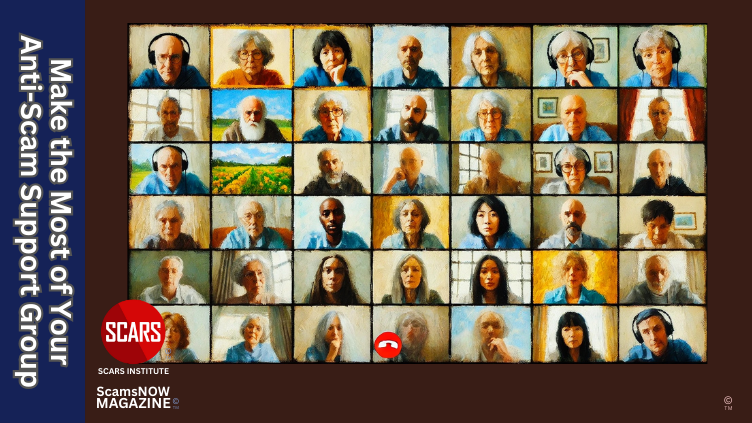





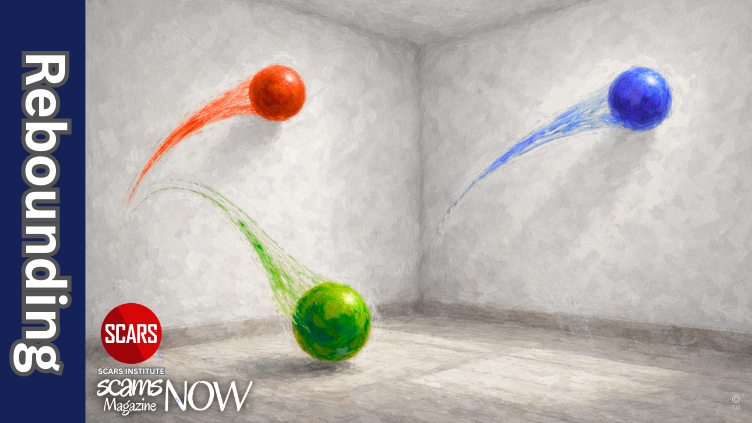


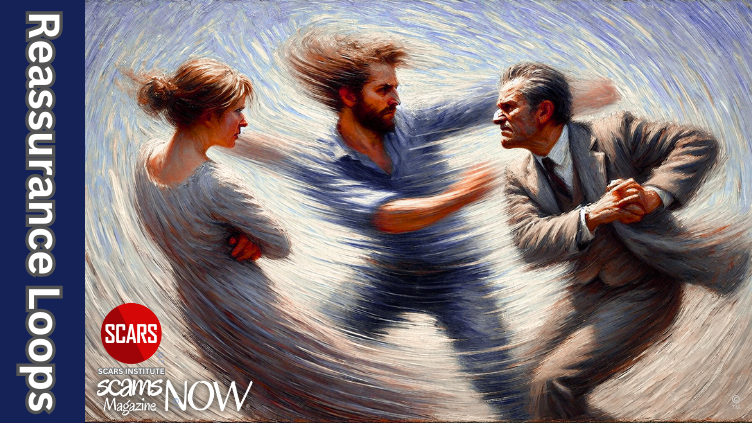


![NavyLogo@4x-81[1] Escapism, Reality Shifting, and Denial - Escaping the Pain - 2025](https://scamsnow.com/wp-content/uploads/2025/04/NavyLogo@4x-811.png)


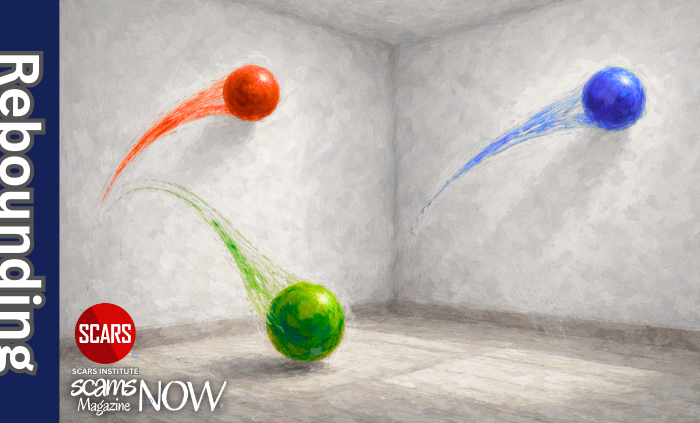

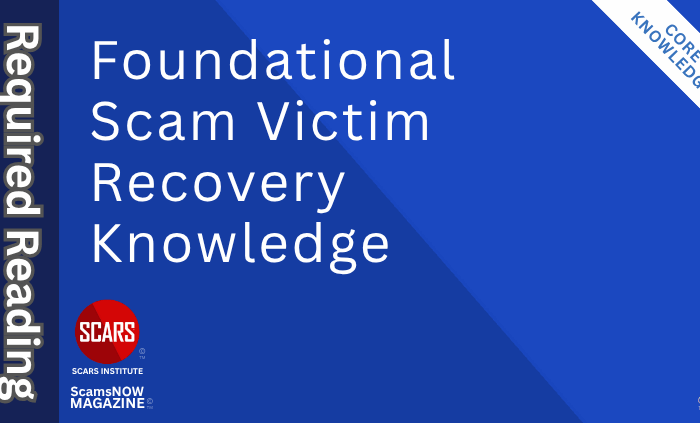

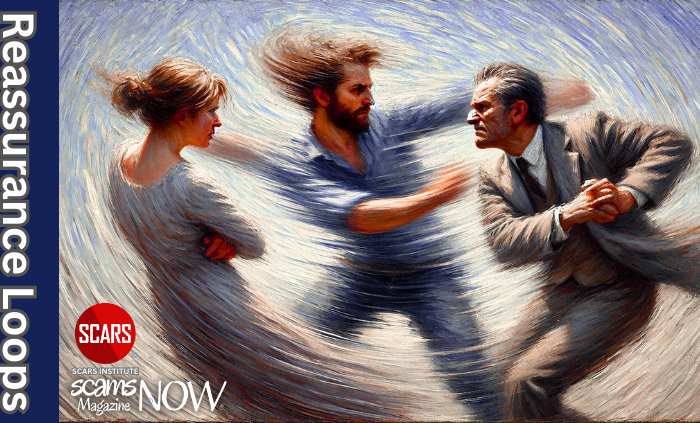


![scars-institute[1] Escapism, Reality Shifting, and Denial - Escaping the Pain - 2025](https://scamsnow.com/wp-content/uploads/2025/04/scars-institute1.png)

![niprc1.png1_-150×1501-1[1] Escapism, Reality Shifting, and Denial - Escaping the Pain - 2025](https://scamsnow.com/wp-content/uploads/2025/04/niprc1.png1_-150x1501-11.webp)
